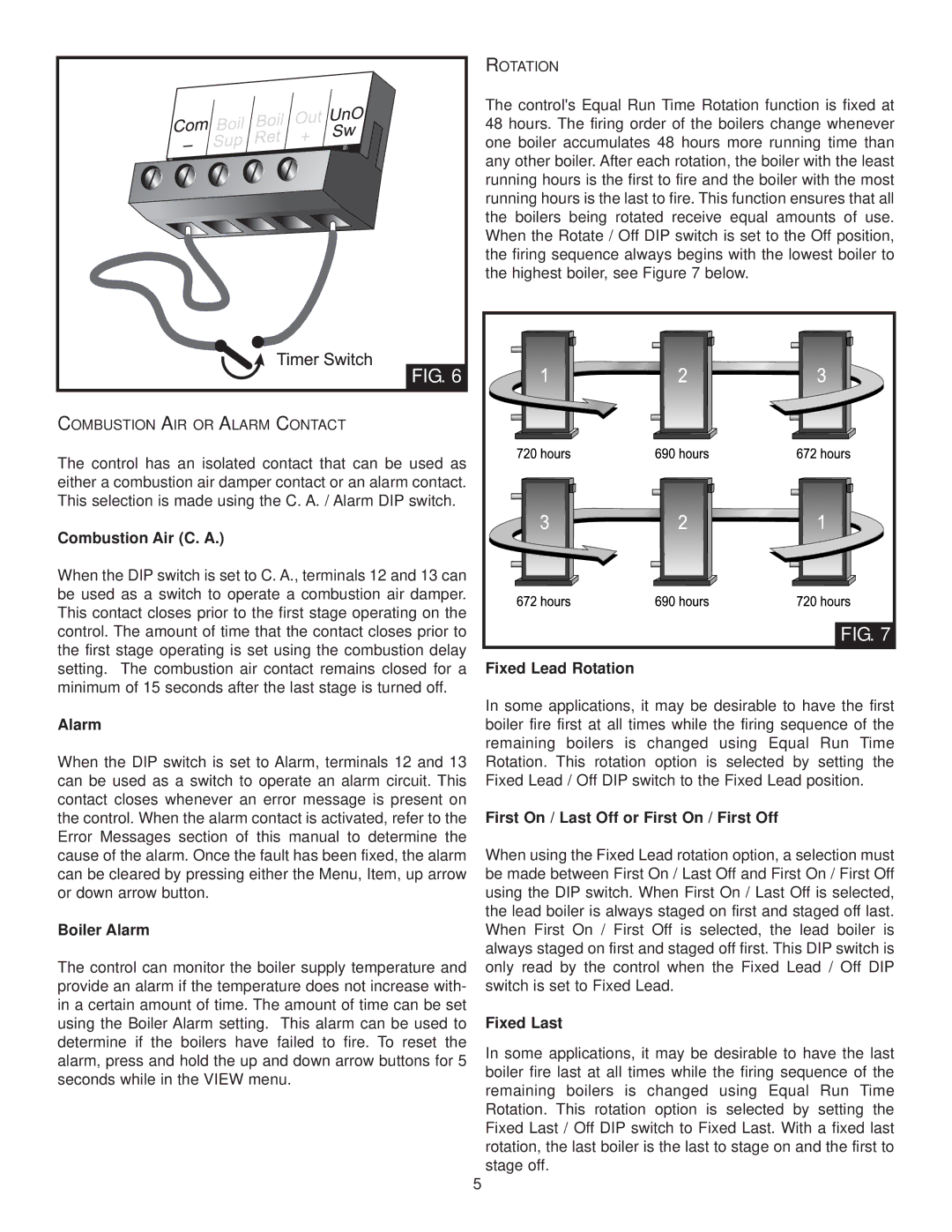
FIG. 6
COMBUSTION AIR OR ALARM CONTACT
The control has an isolated contact that can be used as either a combustion air damper contact or an alarm contact. This selection is made using the C. A. / Alarm DIP switch.
Combustion Air (C. A.)
When the DIP switch is set to C. A., terminals 12 and 13 can be used as a switch to operate a combustion air damper. This contact closes prior to the first stage operating on the control. The amount of time that the contact closes prior to the first stage operating is set using the combustion delay setting. The combustion air contact remains closed for a minimum of 15 seconds after the last stage is turned off.
Alarm
When the DIP switch is set to Alarm, terminals 12 and 13 can be used as a switch to operate an alarm circuit. This contact closes whenever an error message is present on the control. When the alarm contact is activated, refer to the Error Messages section of this manual to determine the cause of the alarm. Once the fault has been fixed, the alarm can be cleared by pressing either the Menu, Item, up arrow or down arrow button.
Boiler Alarm
The control can monitor the boiler supply temperature and provide an alarm if the temperature does not increase with- in a certain amount of time. The amount of time can be set using the Boiler Alarm setting. This alarm can be used to determine if the boilers have failed to fire. To reset the alarm, press and hold the up and down arrow buttons for 5 seconds while in the VIEW menu.
ROTATION
The control's Equal Run Time Rotation function is fixed at 48 hours. The firing order of the boilers change whenever one boiler accumulates 48 hours more running time than any other boiler. After each rotation, the boiler with the least running hours is the first to fire and the boiler with the most running hours is the last to fire. This function ensures that all the boilers being rotated receive equal amounts of use. When the Rotate / Off DIP switch is set to the Off position, the firing sequence always begins with the lowest boiler to the highest boiler, see Figure 7 below.
FIG. 7
Fixed Lead Rotation
In some applications, it may be desirable to have the first boiler fire first at all times while the firing sequence of the remaining boilers is changed using Equal Run Time Rotation. This rotation option is selected by setting the Fixed Lead / Off DIP switch to the Fixed Lead position.
First On / Last Off or First On / First Off
When using the Fixed Lead rotation option, a selection must be made between First On / Last Off and First On / First Off using the DIP switch. When First On / Last Off is selected, the lead boiler is always staged on first and staged off last. When First On / First Off is selected, the lead boiler is always staged on first and staged off first. This DIP switch is only read by the control when the Fixed Lead / Off DIP switch is set to Fixed Lead.
Fixed Last
In some applications, it may be desirable to have the last boiler fire last at all times while the firing sequence of the remaining boilers is changed using Equal Run Time Rotation. This rotation option is selected by setting the Fixed Last / Off DIP switch to Fixed Last. With a fixed last rotation, the last boiler is the last to stage on and the first to stage off.
5
